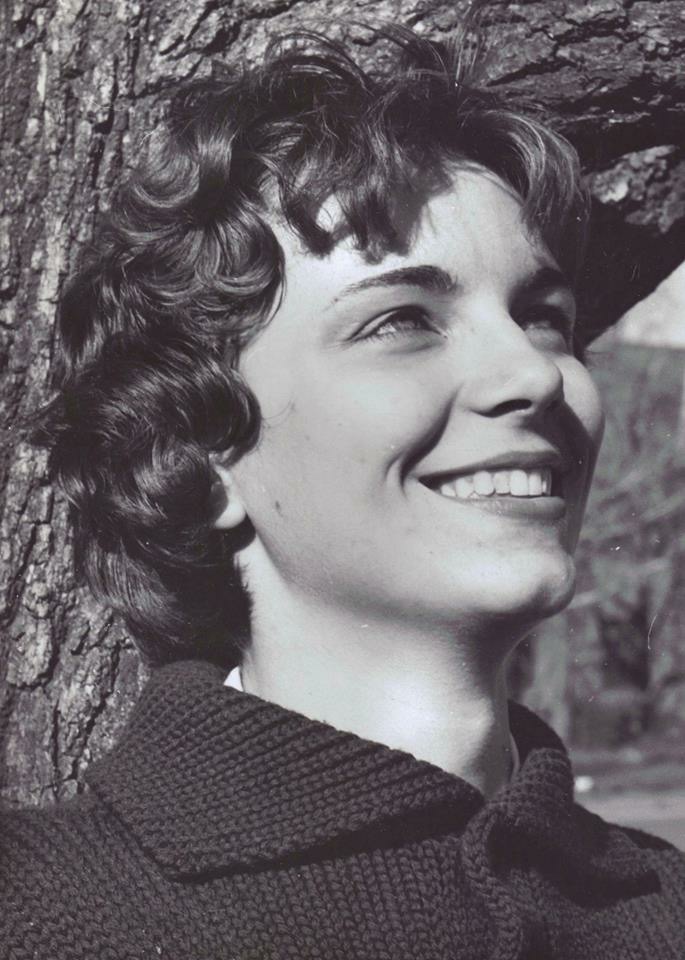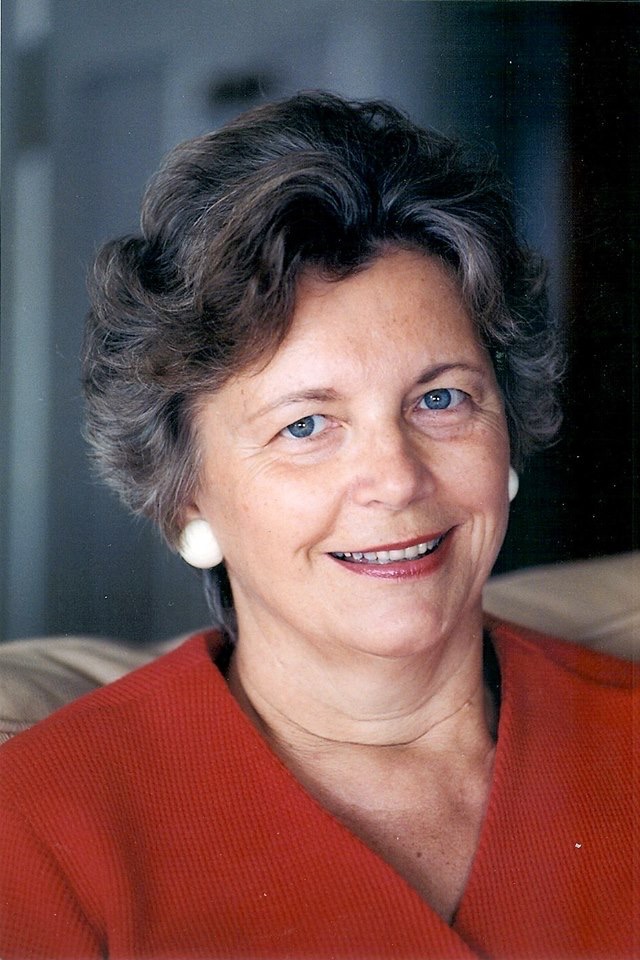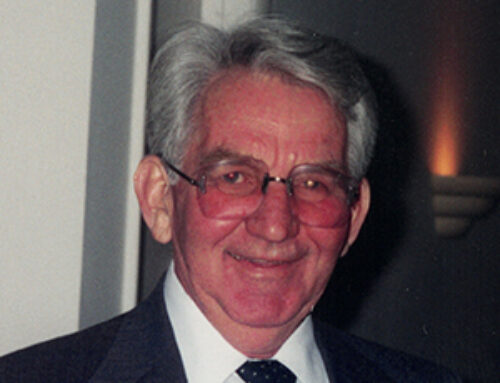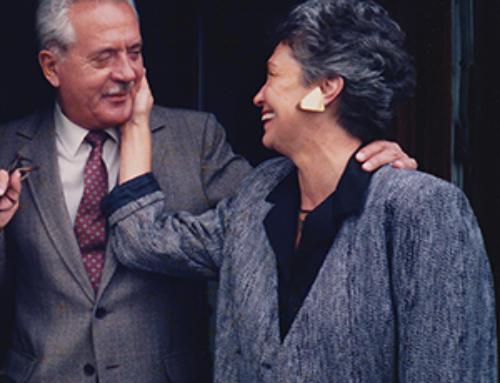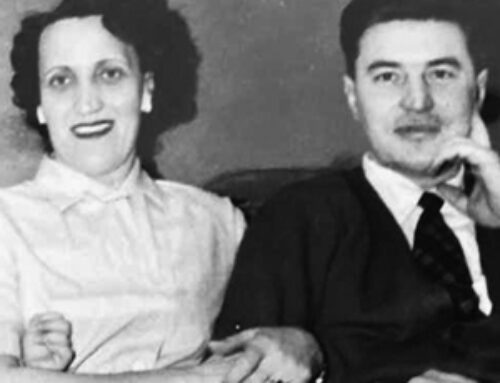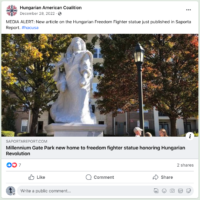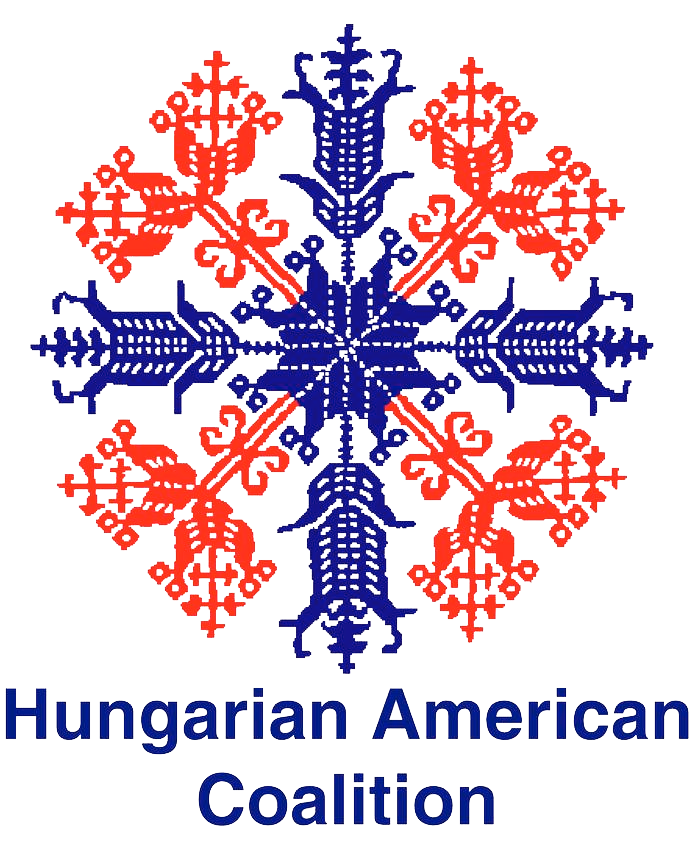Edith K. Lauer
Edith K. Lauer is one of the Founders and presently Chair Emerita of the Hungarian American Coalition (HAC). Born in Budapest, Hungary, she escaped with her family following the 1956 Hungarian Revolution, and eventually settled in Maryland. As President of HAC, she represented the Hungarian American community at several key White House discussions with President Clinton and administration officials on NATO expansion from 1994 to 1997. During her tenure at HAC she was instrumental in establishing many projects in the United States, Hungary, Slovakia, and Romania. She has been a tireless advocate for the human rights of Hungarian minorities who live outside Hungary. She serves on the board of several Hungarian and American non-profit organizations, and is the recipient of many awards, including the Medal of Merit from the President of Hungary and the Order of Merit of the Republic of Hungary.
https://memoryproject.online/edith-kiss-lauer/
1956: When the Impossible Seemed Possible
It all started so innocently on a beautiful sunny October 23rd, back then in 1956. I was a 14 year-old student at the Jozsef Attila Gimnazium in Budapest, whose classmates excitedly whispered the forbidden word “demonstration.” And soon we all set forth to march with university students chanting in support of the recent strikes of workers of Poznan, Poland.
Before the day was over, I would experience things I never dreamed of. Carried along by a swelling crowd from Buda to Pest, climbing up on one of the lions by the Parliament steps, I shouted and cried in disbelief along with tens of thousands of Hungarians. Never did a crowd recite our patriotic poems, or shouted demands for freedom, nor sang the poignant prayer, our Hungarian National Anthem, the way we did that night!
Although in the days that followed I am sure I must have felt fear, what I remember most is a state of constant excitement and hope, shared by family and friends, that a new life of freedom would be possible after all. When political prisoners, among them Cardinal Mindszenty, were set free by the freedom fighters, we reacted with such joy of gaining justice at last! Even as rumors spread on October 29 and 30th that the Soviets would surely retaliate, most of us fervently believed, that “the West,” that far-away, magically benevolent force, could not possibly let Hungary down and would certainly come to our help, if needed. And finally, I remember a crushing sense of hopelessness, when on November 4th, thousands of Soviet tanks and troops re-invaded Hungary, and in a matter of days destroyed what seemed a possible dream only days before.
But many unforgettable things happened between these two dates. When I got home from the initial demonstration of October 23rd, instead of being reprimanded by my parents for being so late, I found them huddled around Radio Free Europe’s late news, trying to catch every word through the usual government static. Only the following morning would we learn that the hated Hungarian AVO (Secret Police) shot into a crowd of demonstrators that had marched on from the Parliament to the Hungarian Radio. Thus, what had been a spontaneous and peaceful demonstration, turned overnight into a bloody revolution.
The days following October 23rd seemed to fly. Rumors spread quickly about violent confrontations between freedom fighters and either Hungarian AVO forces, or Soviet soldiers in various parts of Budapest. In a matter of days Hungarian army recruits and officers deserted in droves to side with the freedom fighters. My sister, Nora and I heard about friends and schoolmates who disappeared only to turn up in one of the most dangerous areas of fighting, the Moscow and Szena Square, or the Kilian Military Barracks.
But much happened right before our eyes. Our third-story apartment overlooked the busy transportation hub of Moricz Zsigmond Circle, a transfer point between buses and streetcars. We could watch communist symbols toppled, and Hungarian flags hanging from nearby balconies with the hammer and sickle ripped out of the middle. Across the street from us was the XIth District administration building. One day, a young freedom fighter, whom we had earlier observed throwing Molotov cocktails at the steady stream of Soviet tanks turning into our street, climbed from the building’s balcony to the roof to pull off the hated red star. We watched with horror as he lost his balance in the effort, and fell with the star to the pavement below.
Each day our Father left to work with the Hungarian National Bank’s Revolutionary Committee. After making us promise to stay at home and be careful, my Mother, a pharmacist, went off to her job in the neighborhood pharmacy right on Moricz Zsigmond Circle. It was she who had the closest contact with the young freedom fighters who often came for alcohol, cotton and bottles to make Molotov cocktails. Later, many were carried in when injured, and laid down behind the counter, as their friends went out to the Circle to continue fighting.
Because few Hungarian families, including our own, were allowed to have telephones, we relied on the newly freed radio and visitors for the latest news. When the first independent paper, “Igazsag” (Truth) was printed, in moments it was sold out. So we waited in long lines on the street to read the single copy posted on the nearest kiosk, and ran home to carry the news to our grandparents, who also lived with us. For several days we joined impromptu brigades of all ages working in a chain to pull up the paving stones on our street for building barricades against the Soviet tanks. Even our Grandfather came to help, although later he sadly admitted he never could really bring himself to believe that “David would defeat Goliath.”
In the early 1950’s, the hated food rationing cards had caused unending lines to form in front of all stores. In 1956, there was widespread destruction of shops in our neighborhood, so obtaining everyday necessities for our family of six became a real challenge. While many store windows were broken, no one took their contents. Makeshift boxes filled with contributions for the Revolution’s victims remained untouched. Hand-made signs proclaimed: “Help us honor our dead by keeping our Revolution pure!” And everyone acted accordingly.
In the mornings, my sister, Nora, and I rushed out to nearby Bartok Bela Street, where farmers from the countryside brought fresh bread and other food items to a large but orderly crowd. In the afternoons I lay for hours on our third-story balcony floor, and peered down between the columns to see the frightening sight of open-bed trucks speeding by, filled with wounded, perhaps already dead freedom fighters.
When All Saints’ Day, November 1st came, rows of women dressed in black marched in silent mourning for their fallen sons and husbands. That evening Moricz Zsigmond Circle, as all of Budapest was bathed in the soft glow of thousands of candles as the city remembered its dead.
Soviet retribution against the Revolution came in the form of an armada of tanks that rumbled into Budapest from Romania and the Soviet Union on the dawn of November 4th. When they entered our neighborhood, there was fierce but short-lived resistance on Moricz Zsigmond Circle. Along with many neighbors we took refuge in the underground shelter that had last been used at the end of World War II, when the Soviets occupied Budapest. As we listened to what seemed like relentless shelling outside, there was no way of knowing if our own building had been hit by the Soviet tanks. Eventually, we were greatly relieved to see it had not been destroyed.
By mid-November, although pockets of resistance remained both in Budapest and in the countryside, everyone was forced to recognize that the Revolution’s defeat was inevitable. When military resistance became impossible, Hungarians called for strikes across the country. But arrests began immediately, the new communist government rapidly consolidated its control,and families, including ours, began to discuss the frightening possibility of escaping to the West. Each evening, whispered conversations took place, and family members came furtively to say hurried good-byes. A curfew was strictly enforced, and anyone on the streets after 8 p.m. could be arrested, or even shot.
In the end, my parents reluctantly decided we would have to leave Hungary to escape persecution and to provide a chance for higher education for my sister and me. As “politically undesirable elements” we would not have been accepted at any Hungarian university. Keeping our plans secret and saying good-bye to my grandparents were the hardest part for me. With the help of my future brother-in-law, Karoly Szabo, and a good friend of his, my Father and I left Budapest on the morning of November 22nd in a “borrowed” taxicab. My Mother and sister, Nora, would only escape a week later, under much more difficult circumstances.
Although our papers provided us with a flimsy excuse for traveling to a plant-protection site, we did not need them, as we encountered little resistance. At several roadblocks we handed over bottles of liquor as we made our way toward the border town of Mosonszentjanos, where two people took away our cab as soon as they saw us. We hid at the local shoemaker’s house until nightfall, when he started leading a larger group of us across the border. With spotlights scanning the fields where we walked, we fell to the ground at regular intervals to await the safety of darkness. Soon we saw lights and a group of smiling Austrians in cars and trucks, waving us toward them. We could hardly believe we had reached Austria.
The next day we sent the agreed-upon coded radio message of our safe arrival to our family. I was soon ensconced in a beautiful home in Vienna of my Father’s childhood friend from Szentgotthard. Suddenly, I lived in what seemed a life of utter luxury where I could have all the unfamiliar but delicious oranges and bananas I wanted. A uniformed maid served me hot chocolate in bed, and soon I was taken to a “clothing center,” where I was able to pick out a beautiful “grown-up” skirt from a huge clothing pile. But the best of all was getting to see “Gone with the Wind,” my favorite story. Although the film was in German, I needed no translation, for it was Lola neni, the grandmother of my best friend, Marta, who had translated the book into Hungarian, and I had all the important scenes memorized!
Soon our family had to decide where we would live. With invitations from relatives in both South Africa and the United States, my Father, who favored the former choice, was voted down by the three of us who chose the legendary “America.” After weeklong stays in refugee camps in Austria and Germany, we flew on a military transport plane to New York, and were taken to Camp Kilmer in New Jersey. Our sponsor/relatives, Kati and Ferenc Kovacs, soon came and took us to their home in Silver Spring, Maryland, just in time to watch President Eisenhower’s second inauguration. I remember wondering why such a kind-looking man did not come to the aid of Hungarian freedom fighters.
I finished my high school and university studies in Maryland, and after marrying my husband, John, embarked on a life of many corporate moves. We first returned to Hungary in the 1970’s, when our daughters, Kriszta and Andrea, finally met their great-grandparents. We made many trips back, and with my sister and her husband paid some early and somewhat scary visits to Transylvania also. In the 1980’s we started supporting the work of the Hungarian Human Rights Foundation. In 1990, after the fall of communism, I was one of the founders and first, the President, eventually the Chairman of the Hungarian American Coalition. I got my Hungarian citizenship back in 1993, and since then have gone to Hungary, and to the neighboring countries where Hungarian minorities live, to work on various Coalition projects several times each year.
It took me many years to realize what a significant, life-defining experience the 1956 Revolution was for me. The ideals, the courage, the sacrifice Hungarians willingly made then to gain their freedom began a process that continued in Poland, then Prague, and culminated only in 1989, with the fall of the Berlin Wall. But it must be remembered, that nearly 50 years ago, it was those young Hungarian freedom fighters who first gave the ultimate sacrifice to show the world the true and terrible face of communism. Many of the 200,000 Hungarians who left their homeland for the West felt responsible for keeping the flame of freedom alive, until Hungary again became free. The privilege of living through those unforgettable days has inspired a deep commitment on our part to pass on to our children what love of freedom meant then, in 1956, and what we must do today to make sure that all Hungarians, including members of historical Hungarian communities in the Carpathian Basin have the freedom to live free, productive, and satisfying lives.
Edith Lauer
Edith Lauer serves as Chairman Emerita of the Hungarian American Coalition, the organization she helped found in 1990. In addition, she serves on the Boards of various Hungarian-American as well as American organizations. She has been a dedicated supporter of Hungarian education and culture, and a tireless advocate for human rights of the 2.5 million Hungarians who live in historic national communities in countries bordering Hungary. After Lauer witnessed the 1956 Revolution, her family escaped to Austria and settled in the U.S. in 1957. She and her husband currently spend most of their time on volunteer work in Cleveland, Ohio, Budapest, Hungary, and Washington, D.C.

